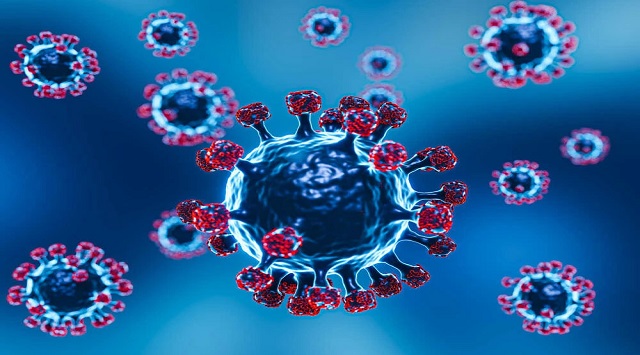Can JN.1 cause severe disease than other Omicron variants?
Their findings come as JN.1, a descendant of the Omicron, is currently the leading variant surging the number of infections.
The BA.2.86, a subvariant of the Omicron variant of Covid-19, can infect human cells that line the lower lung and engage in virus-host cell membrane fusion more efficiently — two features linked to severe disease symptoms, researchers gave found, according to a study.
Their findings come as JN.1, a descendant of the BA.2.86, is currently the leading variant surging the number of infections across several countries. It raises concerns of the immune evasiveness of the virus.
BA.2.86 is the parent of the currently dominating JN.1 and has about 60 more spike protein mutations than the original, or parent, coronavirus, including over 30 more than its close Omicron relatives — the early BA.2 variant and the recently-dominant XBB.1.5 variant among them.
These mutations led scientists to worry that so many changes would make the variant as tough to contain as the initial Omicron outbreak in 2021-22.
However, the study, published in the journal Cell, showed that BA.2.86 can be neutralised by bivalent mRNA vaccine-induced antibodies in the blood, which explains why this variant did not cause a widespread surge as previously feared.
“We found that, surprisingly, despite all those 60 mutations combined together, BA.2.86 is not as immune-evasive as the XBB.1.5 variant, which until recently had been dominating the pandemic for months. That’s good news,” said Shan-Lu Liu, virology professor in the Department of Veterinary Biosciences at The Ohio State University.
“But BA.2.86 appears to have increased infectivity of human lung epithelial cells compared to all Omicron variants, so that’s a little worrisome. And, consistent with infectivity, it also has increased fusion activity with human lung epithelial cells.
“That raises a potential concern about whether or not this virus is more pathogenic compared to recent Omicron variants,” said Liu, also a professor in the Department of Microbial Infection and Immunity.
Researchers found BA.2.86 was more efficient at infecting a cell line derived from the human lower airway epithelium in the lung. Infection of these cells is greatly facilitated through a cell surface protein, known as TMPRSS2, to promote membrane fusion, and this protein is a known contributor to SARS-CoV-2 infection and disease symptoms in the respiratory tract.
First author Panke Qu, a graduate student in Liu’s lab, conducted the cell-culture studies using pseudoviruses — a non-infectious viral core surrounded by different SARS-CoV-2 spike proteins on the surface structured to match known variants.
Liu noted that other labs have recently suggested that JN.1, one of the fastest-growing descendants of BA.2.86, is much more resistant to neutralising antibodies that are effective against BA.2.86. “We know that coronaviruses are prone to viral recombination, which can lead to new variants with huge numbers of mutations that could have increased immune evasion but also disease severity,” he said.
“That’s why surveillance of the variants is still very important, even though we are in the end of year four of the pandemic.”




 Ms Kalinga
Ms Kalinga